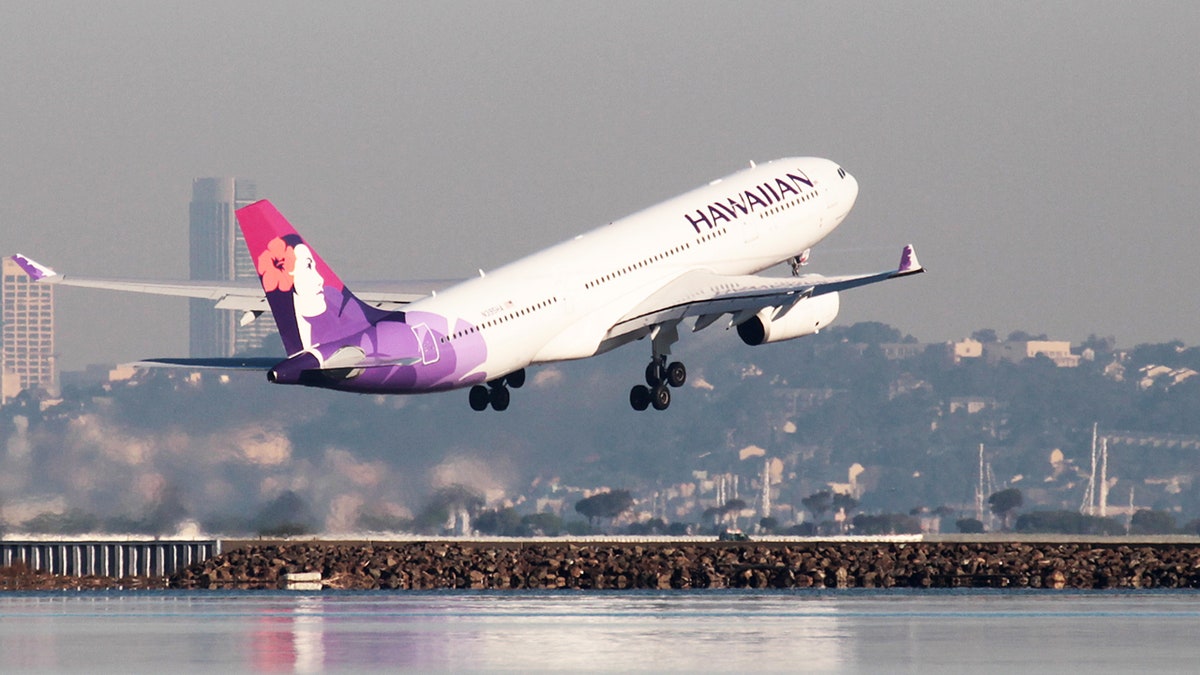
Airlines may be dealing with obese passengers in new ways. (Reuters)
Two American Samoan businessmen have filed complaints with the U.S. Department of Transportation allegeding they may have been the target of discrimination after being weighed while boarding a recent flight from Honolulu.
In the complaints, the men also say they were assigned new seats on the aircraft that they did not originally select, to ensure that the weight on the flight was evenly distributed.
Airlines and aircraft manufacturers have been debating different ways to deal with fliers’ expanding waistlines, but a spokeswoman for Hawaiian Airlines tells FoxNews.com that it has not implemented a policy of weighing passengers before all flights. Instead, the flight in question was part of a survey period in which the airline weighed each flier traveling between Hawaii and the American Samoan capital Pago Pago.
“This action resulted from the recognition that over time our fuel burn on Pago Pago (PPG) flights was consistently much higher than projected, indicating that our weight assumptions were inaccurate. We review weights on any flight within our route network that demonstrates such a discrepancy,” Hawaiian communications director Alison Croyle confirmed to FoxNews.com. Contrary to existing reports, Hawaiian says it has performed the weight survey on other routes.
“For example, we surveyed our Japan and Korea flights in 2015 and our new Narita flight earlier this year.”
RELATED: 'Real Housewives' star Kandi Burruss claims she was kicked off Hawaiian Airlines flight
The survey period lasted six-months and was conducted in accordance with FAA protocols, says Croyle. The results confirmed that the “aircraft cabin weight was heavier than projected” and passengers were reassigned seats to fill empty rows and ensure even weight distribution.
But Avamua Dave Haleck, one of the men who filed a DOT complaint, isn’t buying the explanation.
“…. Hawaiian is saying that 'yes it is a safety issue' but, you know, weight distribution,” Haleck told Radio New Zealand, “so have we been flying unsafe for all these years?"
Hawaiian Airlines has been flying the Boeing 767-300 aircraft to American Samoa since 2003. The station argued that the plane used on the Honolulu-Pago Pago route can safely fly 269 passengers a distance of 6,835 miles. The distance between the two cities is just under 2,600 miles.
Some have suggested that the move by the airline may be driven by the fact that American Samoa, according to the CIA’s World Factbook, has the highest rate of obesity in the world. Over 74 percent of its adult population is considered obese. Those figures from 2007-2008 may be outdated, however, with more recent claims landing the rate around 95 percent.
In 2013, Samoa Air became the world's first airline to charge passengers according to size. Those flying on the South Pacific carrier were asked to pay for each kilo that they-- combined with their baggage-- weighed.
The DOT says that it is currently investigating the complaints against Hawaiian Airlines to determine if any type of discriminatory practice occurred.
